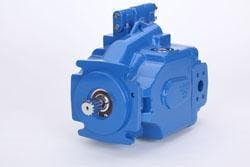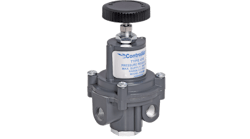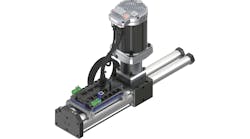Compact, Piston-Type Open Circuit Pumps Optimized for Tier-4 Diesel-Powered Applications
Aug. 26, 2010
Related To: Eaton Hydraulics
Eaton Corporation today announced availability of a new series of compact piston-type open circuit pumps incorporating the latest technology for moderate flow, high-pressure applications. The new 620 Series is rated at 280 bar and 2,200 rpm with a displacement of 98 cc (6.0 in3)/revolution, making it an ideal choice for a variety of mobile and stationary applications including wheel loaders, motor graders, concrete equipment, salt and sand spreaders, vacuum trucks, telehandlers, refuse trucks, rail maintenance, forestry equipment, and drill rigs. Planned future models in the 620 Series will include displacements of 65 cc (4.0 in3), 74 cc (4.5 in3), and 120 cc (7.3 in3) per revolution.“We designed these pumps to be very compact,” said Todd McIntyre, Eaton open piston product manager, “because space is at a premium on the types of mobile equipment for which they are primarily intended. With Tier-4 compliant engines and aftertreatment systems taking up more and more space, customers are looking for increased power density in hydraulic components to help make up the difference. “The 620 family does that exceptionally well. In fact, it would be fair to call them the first generation of Tier-4 hydraulic components,” McIntyre said.Eaton’s new 620 Series pumps feature a 15° swash plate angle that allows the pump body to be up to 27 mm (1.1 in) shorter than competitive pumps. Internal flows and valve plate timing have been optimized to realize the packaging benefits of the smaller angle without sacrificing overall pump efficiency.Bearing design is optimized to achieve a 13,600 hour B-10 life while handling the higher internal forces created by the new design. The control piston is treated with an anti-friction coating to minimize particulate build-up and reduce response time.The 620 pump can be equipped with advanced technology such as a swash plate feedback sensor that makes it ideally suited for use in an electrohydraulic environment in which the pump’s operation is governed by electronic sensors and controls. Such electrohydraulic systems open many exciting opportunities to improve the productivity of a wide range of construction, agricultural, and off-road equipment.





